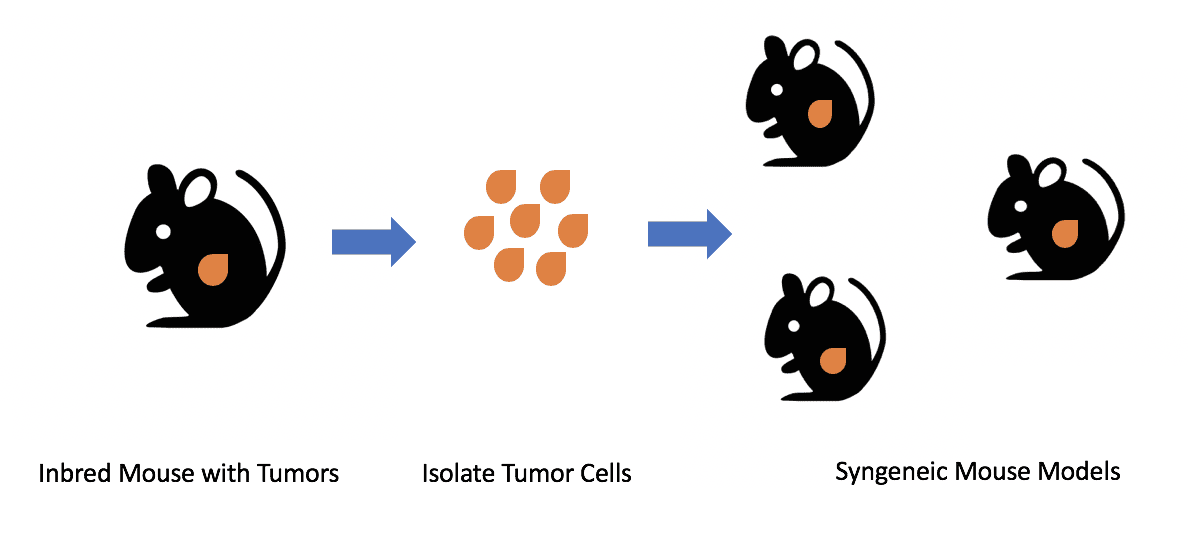Syngeneic Mouse Models and Humanized Immune-Checkpoint Mice
Why do we need Syngeneic Mouse Models?
To test potential immuno-oncology therapeutics in vivo, it is necessary to ensure that the disease model used has an intact immune system. Immunotherapeutics work with the body’s immune system to fight cancer cells. Often through inhibiting specific cell receptors called immune checkpoints, immunotherapeutics seek to bind to receptors that, when bound to its ligand, prevents an immune response from mounting. Thus, when inhibiting these receptors, the immune system’s regulatory functions can be manipulated to be more active and effective in eliminating or killing cancer cells.
What are the benefits of Syngeneic Mouse Models?
Because an intact immune system is necessary to test immune checkpoint inhibitors, immunocompetent syngeneic models are ideal. For these syngeneic models, an isolated murine tumor cell line is implanted into immunocompetent mice of the same strain or genetic background. Consistent use of the same strain prevents tumor rejection, allowing successful implantation of tumor cells that are recognized as “self” by the mouse. Syngeneic mouse models offer the benefits of low cost, convenience, and ease of use.
Figure 1. Illustration of syngeneic mouse model.
How do you work with Syngeneic Mouse Models?
As an added benefit of choosing to use syngeneic models for research, syngeneic cell lines, when available, can be relatively inexpensive and easy to culture in a lab setting. The syngeneic tumor cells are then injected into the mice, which have 100% penetrance, at controlled time periods based on the experimental design and model.
Are there any downsides to Syngeneic Mouse Models?
A clear drawback to classic syngeneic mouse models is the limited tumor lines available in mice compared to that of human patients (see patient-derived xenografts or PDX). Moreover it is important to consider that while mouse-derived tumors can be analogous to human cancers, it is not certain that the mouse immune response will readily translate to that of the human.
Humanized Immune-Checkpoint Mice and Syngeneic Mouse Models
Moving traditional syngeneic mouse models toward today’s relevant immuno-oncology targets, Biocytogen offers many humanized immune-checkpoint mouse models. Humanized immune-checkpoint mice are genetically engineered to express human immune checkpoint proteins, which allow the engraftment of wild type or humanized murine cell lines. Our humanized immune-checkpoint mice are carefully designed and generated to maintain biological functions and ensure more reliable drug validation. With humanized mice, in vivo efficacy evaluation of humanized immune checkpoint antibodies or inhibitors becomes even more reliable and dependable.
See Humanized Immune-Checkpoint Mice
Figure 2. Illustration of Human Immune-Checkpoint Mice.
Check out more of our animal and cell models:
Other Genetically Modified Mouse/Rat Models
Download our Model Catalog




